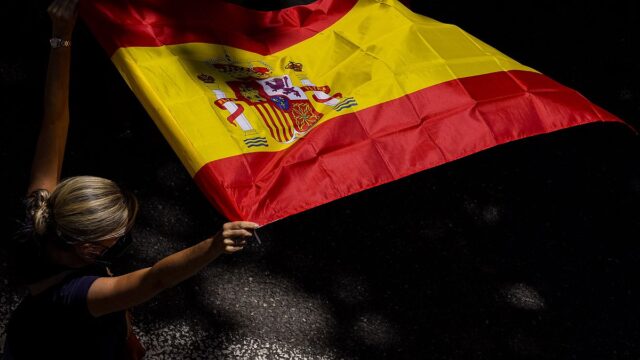Falling food prices contributed to the decline, as products such as butter, milk, pasta, flour and chicken became cheaper.
Preliminary estimates of Spain’s year-on-year inflation rate for July show a decrease to 2.8%, compared to 3% in June, according to data from the National Institute of Statistics (INE). Is about the lowest figure in five months and lower than analyst expectations of 3%.
The figure was mainly due to the drop in food prices and electricity, although the cost of culture and leisure continued to increase at the same level as the previous year.
Prices of foods such as butter, milk, pasta, chicken and flour fell. This was mainly due to the extension until September 30, 2024 zero rate of value added tax (VAT) for basic foods. This rule was applied for the first time early last year.
In the words of Miguel Cardoso Lecourtois, chief economist for Spain at BBVA Research: “It will be interesting to see if the downward pressure on food prices could be the beginning of a correction that could last the next 12 months.”
“Las weather conditions during winter and spring ended a droughtand could reverse some of the increases seen in prices during 2022 and 2023,” he adds.
“Core inflation also could be benefiting directly from this trend whether processed foods are also being affected. However, at this time, the July data could be punctual,” says Cardoso Lecourtois.
Other sectors, like national tourism and maritime transport, too continue to record price declinesas well as some technological products, such as computers and mobile phones.
July’s year-on-year core inflation rate, which excludes food and energy prices due to their inherent volatility, also fell to 2.8%, compared to 3% in June. It hit its lowest level since January 2022. July’s month-on-month inflation figure fell to -0.5%, from 0.4% in June. It’s about the biggest drop since September 2022 and the first decline in eight months.
Spain exceeds economic growth forecasts
Spain also reported on Tuesday the figures for the Gross Domestic Product (GDP) corresponding to the second quarter of the year, in which the country registered quarter-on-quarter growth of 0.8%. Although this figure is identical to that of the previous quarter, it exceeds analysts’ forecasts (0.5%).
The figure was mainly driven by the 1.2% increase in exports of goods and services, although imports decreased by 0.2%. Public administration spending also increased by 0.2%, and household final consumption spending also grew by 0.3%.
On the other hand, the industrial sector advanced 0.4%, with a growth of 0.1% in construction and 1.1% in the manufacturing industry. However, primary sectors fell 1.2%.
The annual GDP growth rate in the second quarter was 2.9%up from 2.6% in the previous quarter, also the fastest growth rate in more than a year.
According to the International Monetary Fund (IMF) in June: “With a growth rate of 2.5% in 2023 and the maintenance of a solid momentum in activity, the Spanish economy has shown remarkable resistance in the face of high global uncertainty and the tightening of financial conditions. “The solid performance of services exports and public consumption have been the main drivers of recent growth.”
“The labor market has maintained its good performance, particularly thanks to the significant influx of immigrants and the increase in the activity rate. However, despite its most recent rebound, investment remains below the levels of the end of 2019, and this weakness has contributed to low productivity growth. And despite its significant decline, the unemployment rate remains the highest in the euro area.”







